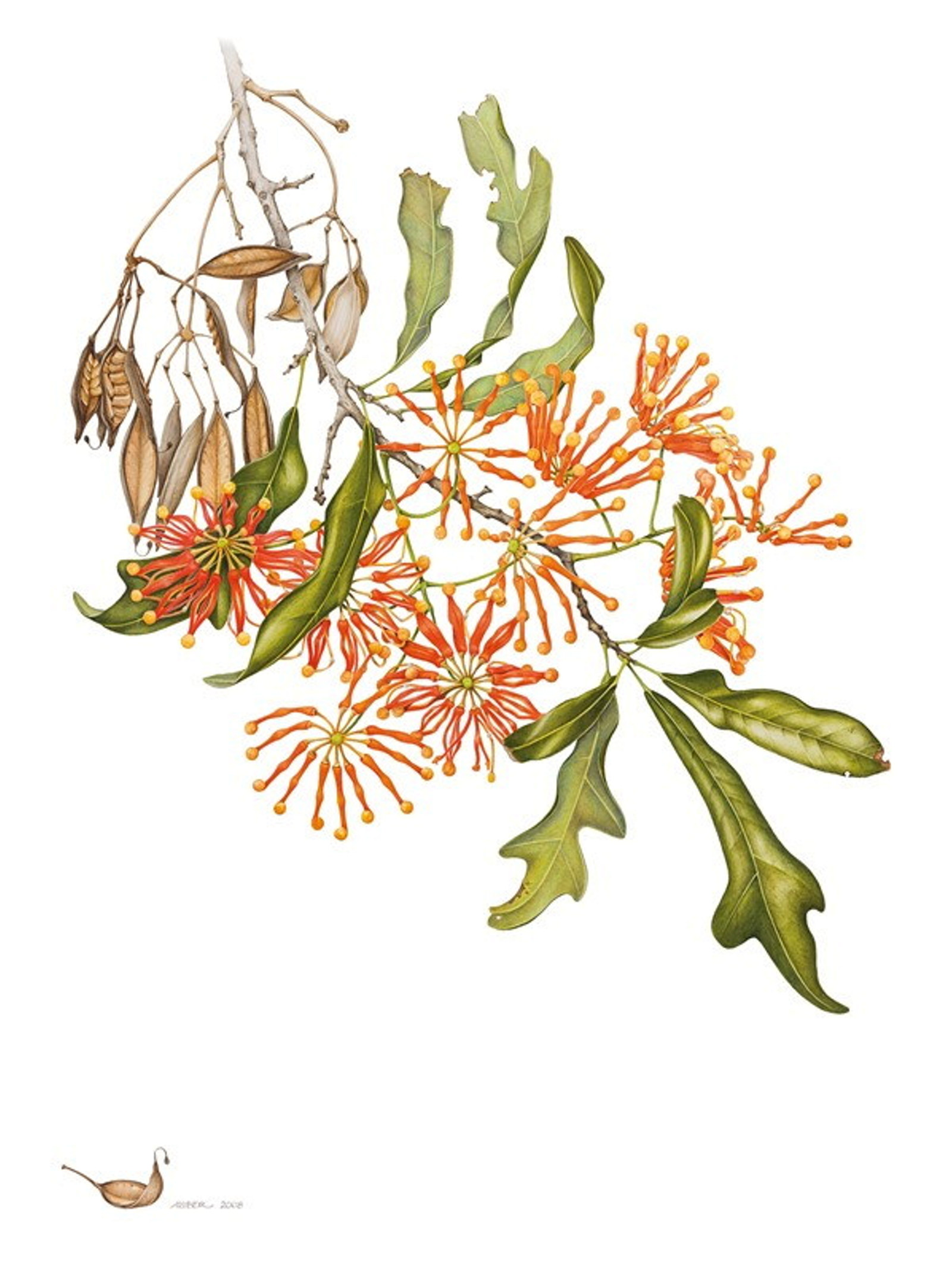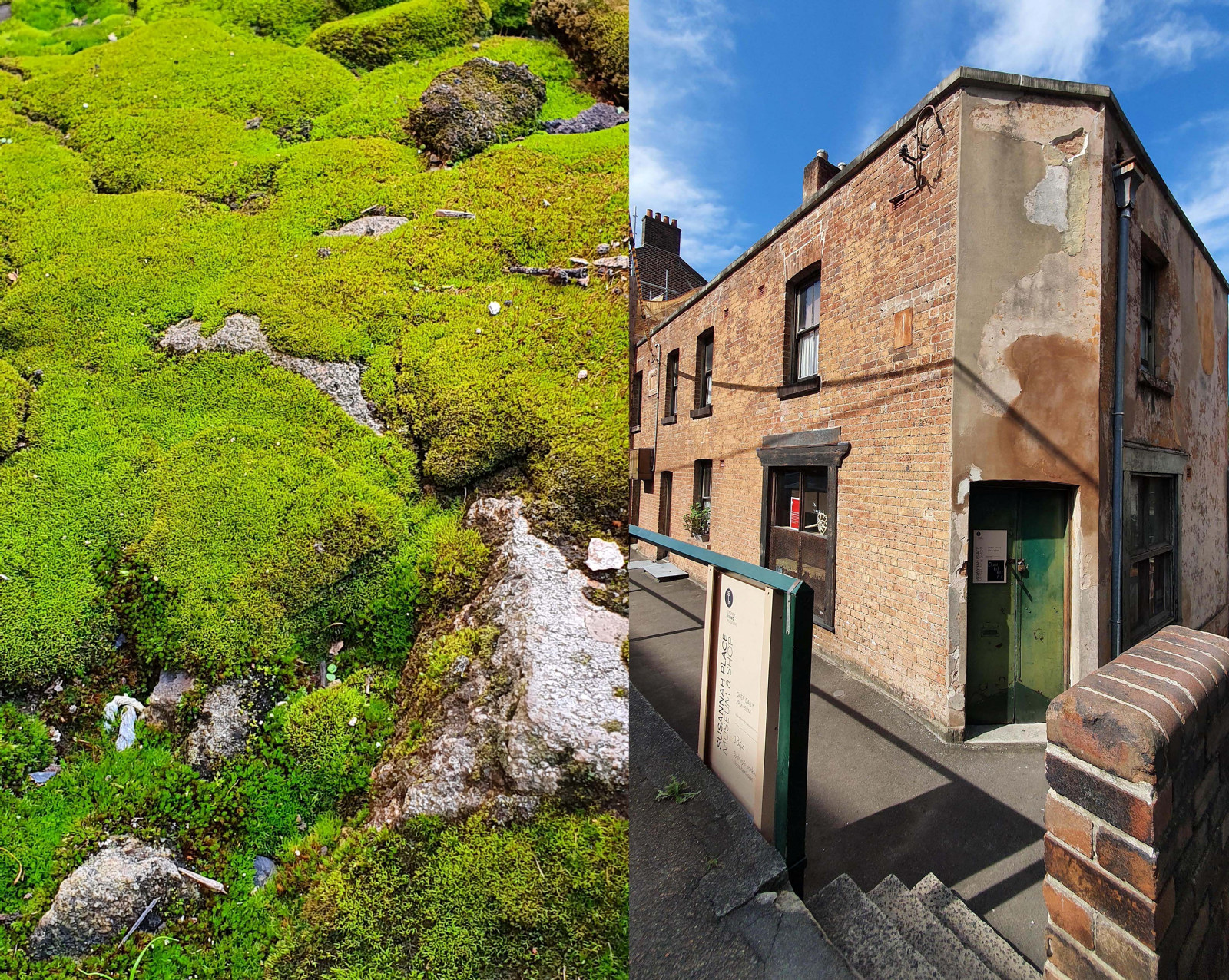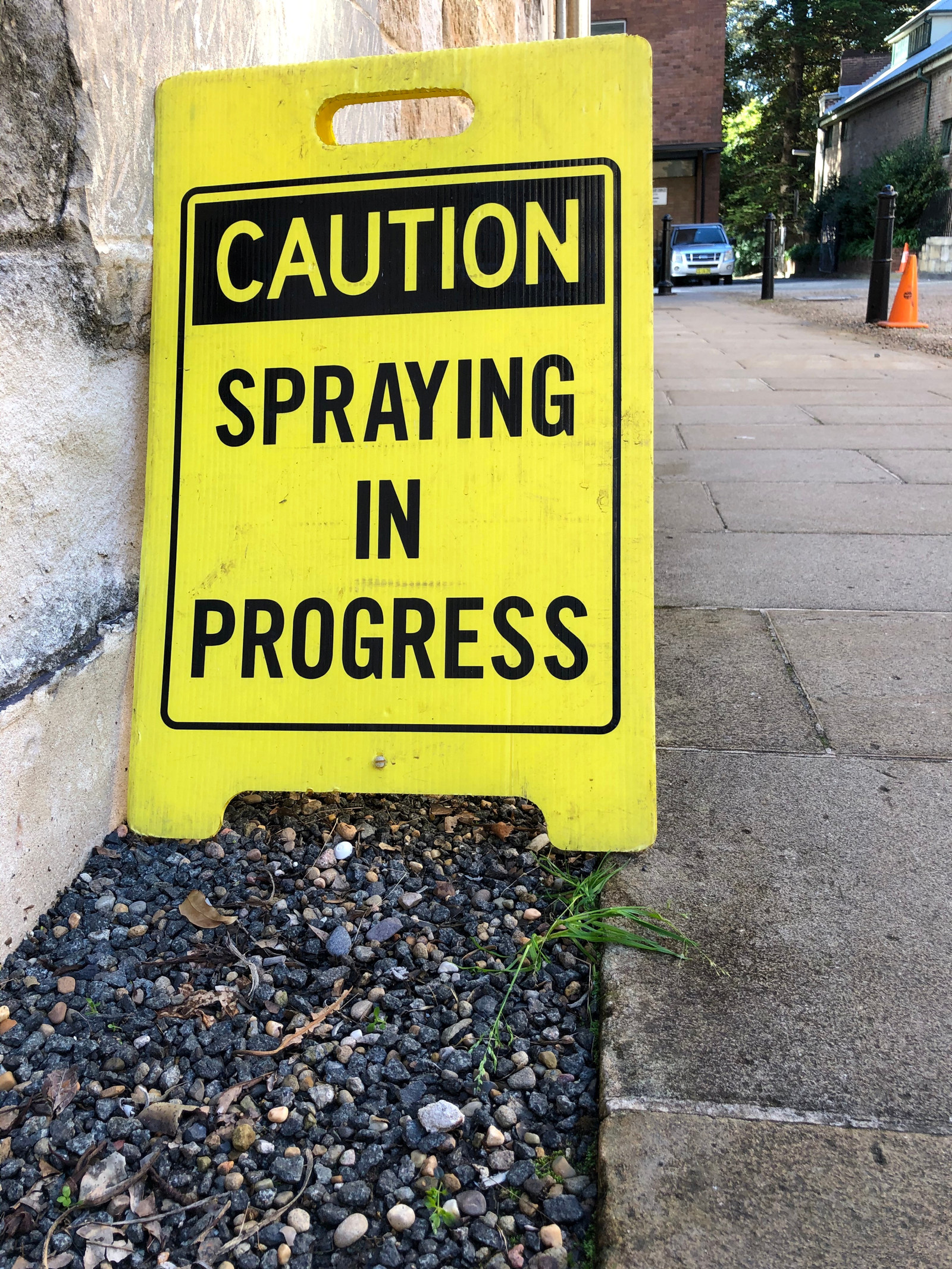Autumn bonanza
As summer’s heat finally fades, autumn’s lengthening shadows and burnished golden sunsets signal the start of a busy season for the Horticulture team at MHNSW, with many garden plants bursting into colourful life.
For me the unfurling of the first sasanqua camellia flowers in late March, roughly coinciding with the equinox (the time when the sun crosses the plane of the equator), signals the beginning of autumn in Sydney – a long transitional period between the enervating heat and humidity of February and March and the cool, crisp mornings of June and July. If the flowering of the jacarandas in November announces the arrival of summer, so then the sasanquas introduce autumn, with a long succession of garden plants that flower throughout the cooler months, challenging our notion of autumn and winter as dormant seasons. A few cheeky azaleas start spot-flowering as well, followed in May by the early japonica camellias that become one of the mainstays of the winter garden.
On the coast
In coastal gardens such as the historic pleasure garden at Vaucluse House, rampant growth continues unabated until midwinter, and mowing the extensive formal lawns is still a major weekly chore. The favoured microclimate of the house’s setting in a protected little valley enables tropical plants to thrive alongside cool temperate shrubs and perennials. This combination offers the delightful paradox of blazing autumn colour from cool-climate deciduous trees and conifers juxtaposed with palm trees and tropical Brugmansias. English garden writers, trying to make sense of something so foreign, called it ‘the paradise style’. These gardens developed in the 19th century as a richly evolved expression of ‘subtropical gardenesque’, taking advantage of Sydney’s benign climate.
Autumn days in this part of Sydney are sunny, with temperatures still as high as the mid-twenties, but the welcome longer, cooler nights when temperatures drop as low as 15 degrees Celsius trigger many garden plants to initiate flowering. Many of our locally endemic species that have rested through the hottest days of summer burst into active growth and flower. (Joseph Banks, botanising around Botany Bay in April 1770, was excited by the many flowering plants he saw.)
Repeat flowering roses put on a good show in autumn with fewer problems from the black spot and mildew that affect them in humid months. Most of the roses at Vaucluse House are 19th-century varieties that actually flower throughout the year, such as Chinas and Bourbons, but they fare better in the cooler days of autumn. China Monthly and Lady Brisbane, stalwarts of colonial gardens, never miss a step, flowering profusely right through into midwinter. Roses, succulents and geraniums together are another wonderfully offbeat combination to be seen in MHNSW gardens, while strelitzias and shrubby salvias such as Salvia leucantha dazzle the eye.
The kitchen garden
Winter in the kitchen garden is a bountiful season, but much depends on the preparation carried out in autumn. Beds have to be dug over to aerate the soil, old vegetation removed and composted, and new seeds sown or seedlings put out. Each year we make new climbing frames for sweet peas using bamboo and giant reed from the garden to create a visually authentic interpretation of colonial gardening practices. Asparagus and rhubarb, seasonal perennials that go dormant for just a few weeks in winter, benefit from top-dressing with manure and mulch to encourage next spring’s growth.
Western Sydney
Gardens in western Sydney, such as those at Elizabeth Farm and Rouse Hill House & Farm, experience more pronounced seasonal change than coastal and harbourside locations. While much of Australia has been in a severe drought since winter 2018, and despite January’s heatwave conditions, overall Sydney enjoyed a relatively mild, wet summer, with good rainfall in the western suburbs keeping lawns green and stimulating growth. At Elizabeth Farm an old persimmon tree (Diospyros kaki) and a huge crepe myrtle (Lagerstroemia indica) in the eastern garden confidently put on a prolonged show of autumn colour triggered by much cooler nights and bright sunny days. The crepe myrtle especially is a great stalwart of western suburbs gardens, happily sailing through the hottest summer weather. Fewer people notice that its autumn show is as beautiful as its summer flowers, with the foliage turning many variations of yellow/orange/russet/red and the patterned bark glowing red and brown. At Elizabeth Farm these two venerable trees grow alongside tropical ginger (Alpinia speciosa) and cannas (Canna x generalis).
Seasonal colour
The cooler autumn days mean slower growth rates, especially of grass, finally allowing the horticulturists to catch up on much-needed garden maintenance activities such as weeding, mulching and deadheading. Perennials such as cannas and dahlias that have passed their best can be cut back hard or lifted (dug up and divided or replanted). We grow a few old dahlias in the garden at Meroogal in Nowra, where autumn suits them better and is actually their best season. Old-fashioned gerberas also put on a repeat show at Meroogal. Dahlias and gerberas were once popular flowers that have mostly disappeared from smart urban gardens now. Thankfully they still have devotees in country towns like Nowra to preserve them in cultivation.
Spectacular autumn colour from deciduous trees isn’t a major feature of MHNSW gardens, but it isn’t entirely absent either. At Vaucluse House there was extensive planting of ornamental deciduous trees from the 1930s to the 1960s, including many planes (Platanus x hybrida), sweet gums (Liquidambar styraciflua), cottonwoods (Populus x canadensis), poplars (Populus nigra) and Chinese elms (Ulmus parvifolia), all of which colour to a degree even in the mild harbourside location. In the western paddock one of the standout trees botanically is a very fine Montezuma bald cypress (Taxodium mucronatum), not commonly seen in Sydney gardens, a semi-deciduous conifer whose feathery foliage turns a softly glowing orange in autumn and winter.
Watching the seasons
Leaf fall continues until early June, as autumn gently segues into winter with its chilly mornings and shorter days. Contrary to expectation, far from being colourless and desolate, our gardens will be ablaze with flowers throughout winter, as many exotic trees and shrubs burst into bloom. Autumn is just a foretaste of what’s to come!
Our gardens are a living record of past horticultural tastes and practices, timeworn and old hat, which is exactly what we treasure about them. There’s a slow rhythm and certainty to the seasonal changes we can savour in these old places that is in marked contrast to our contemporary need for immediate and disposable effects. In these old gardens ‘lifestyle’ is not a consideration, just a love of plants and the patient observation of small changes from day to day. Autumn reminds us of the mutability of nature but also the promise of renewal and rejuvenation to come.
Published on
Plant your history
Browse all
Florilegium plants
A gathering of flowers: the Florilegium collection
Finely detailed botanical artworks reveal the range of plants introduced to Sydney’s gardens over the past 200 years

Plant your history
A mossy analogy for Susannah Place: small but mighty
Mosses are everywhere! They are small, mighty, unsung and inhabit the most unusual places. They can be found in all our museum outdoor spaces if one looks closely enough

Plant your history
A new weapon in the war on weeds
A black and yellow sign warns me there is “Spraying in Progress”, and I wonder for a moment why no one is wearing a mask, or even gloves. But the dangerous looking mist enveloping these men is not what it seems

Plant your history
Acanthus - an apt symbol for The Mint
Look at any classical building today, anywhere in the world and chances are you will find an acanthus leaf lurking somewhere
